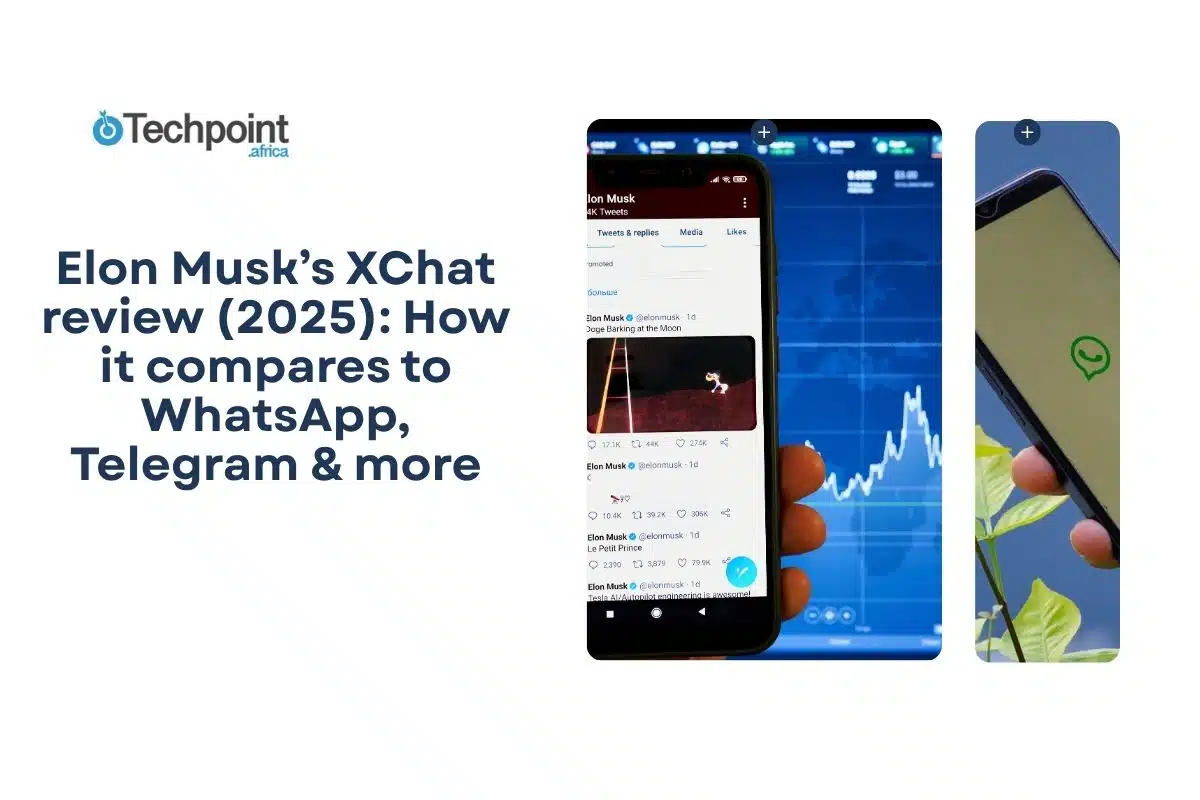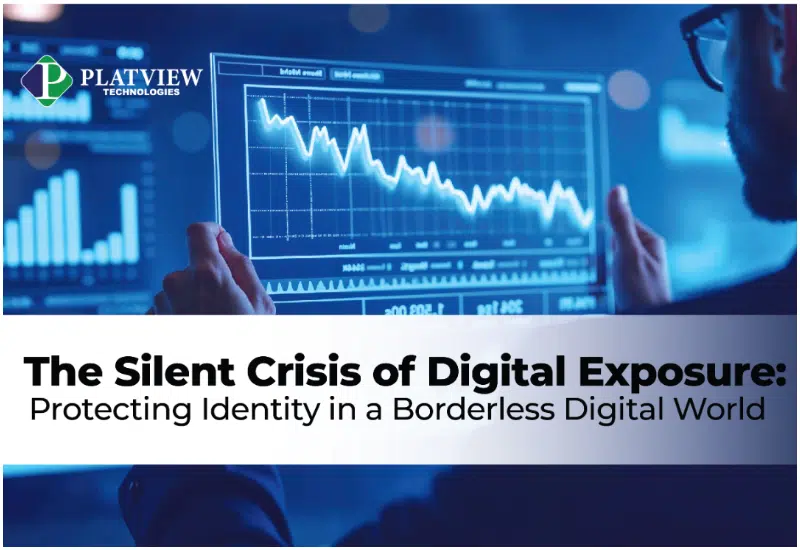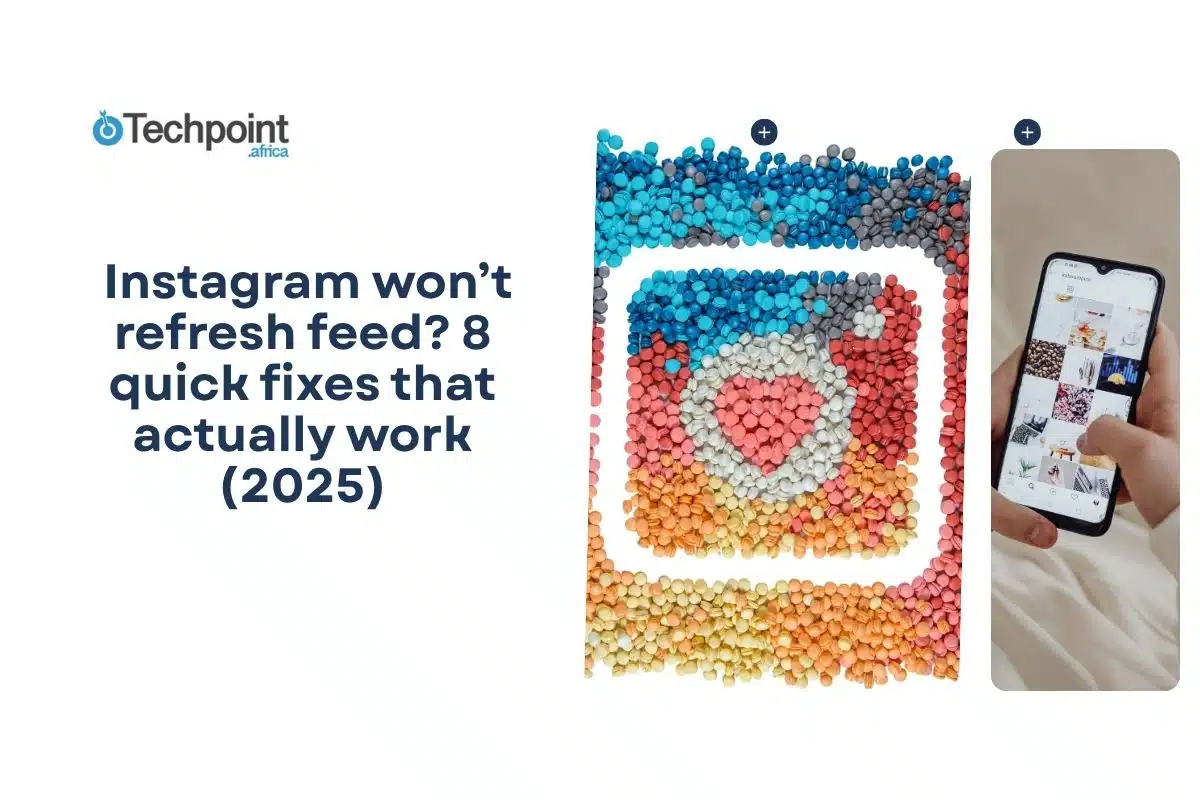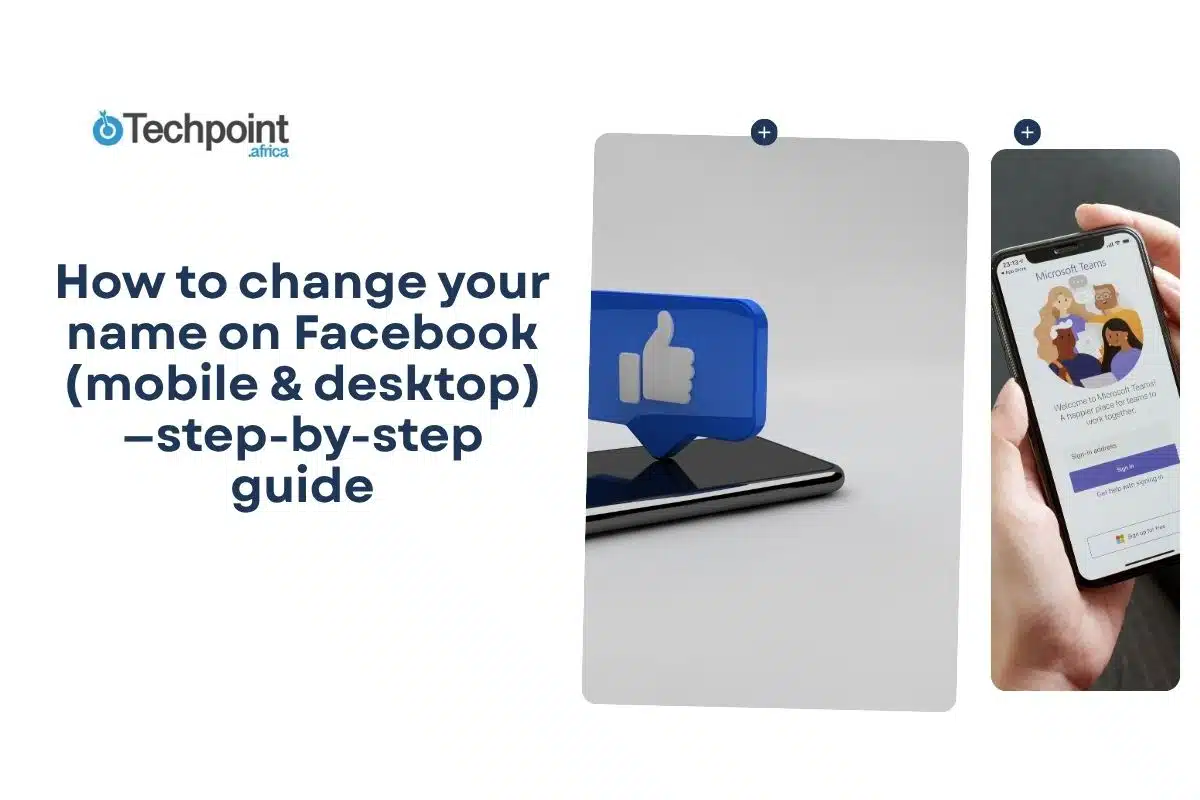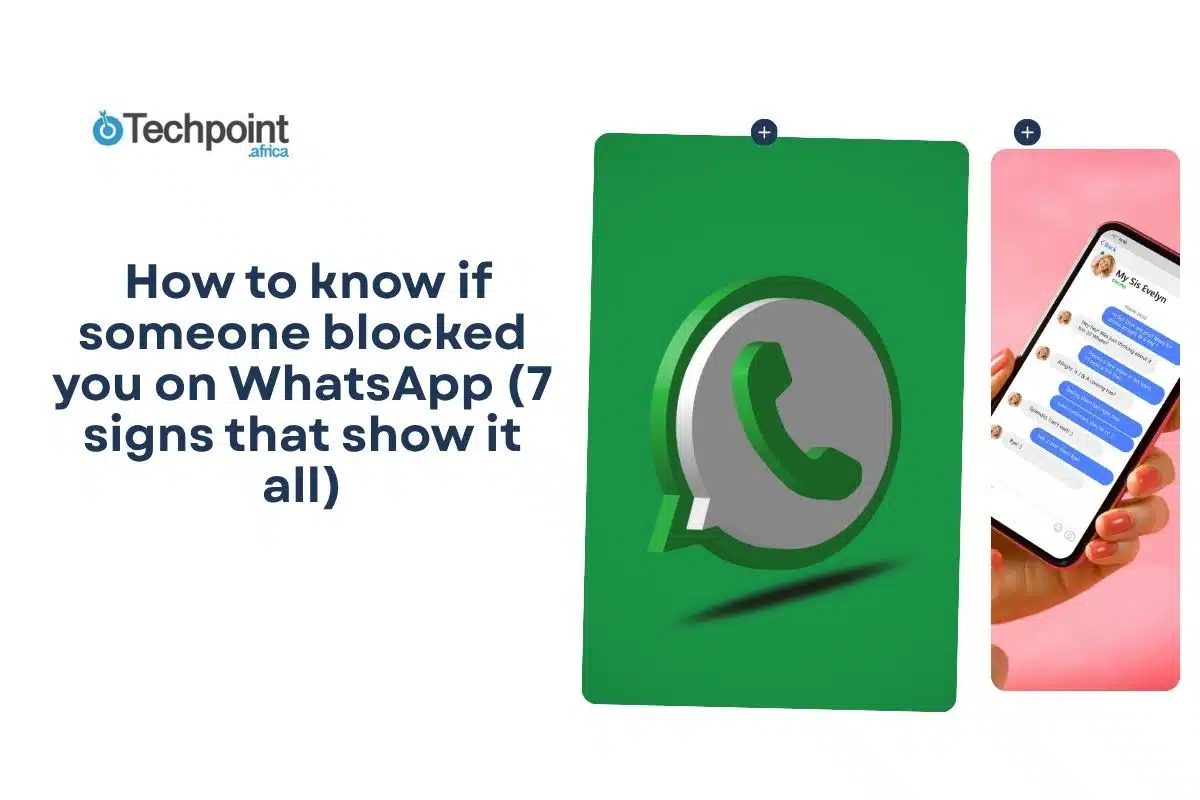When I first heard Elon Musk was launching XChat as part of his “everything app” master plan, I wasn’t sure what to expect. A Telegram rival? A crypto wallet disguised as DMs? A chatbot that sends memes and stock tips?
Whatever it was, I knew I had to find out.
XChat is Musk’s latest move to turn X (formerly Twitter) into more than just a social platform. It’s supposed to be your all-in-one communication hub: chat, share, possibly pay, maybe even whisper sweet nothings to a Tesla bot someday.
Launched quietly within the X app, XChat is already live in select countries and inching toward global rollout. And like anything Elon touches, it’s stirred a mix of excitement, skepticism, and wild speculation.
So, I did what any tech-curious writer would do — see what the rave is about. In this article, I’ll walk you through Elon’s latest venture, its features (and gaps), what real users are saying, and how it compares to other messaging apps like WhatsApp, Signal, Telegram, and good old Messenger. Whether you’re a die-hard Elon fan or just looking for a decent chat app, here’s what I found.
TLDR: Key takeaways from this article
- XChat is Elon Musk’s ambitious take on messaging, blending DMs, AI, and social features into one app.
- Core features are still developing, with some users praising the design and integration while others report bugs and missing basics.
- End-to-end encryption isn’t clearly defined, making it a weaker choice for privacy-focused users.
- UI feels slick but raw, better suited to curious early adopters than everyday users needing stability.
- XChat’s biggest strength is its integration with the X ecosystem, especially for creators and power users.
- The app reflects Musk’s larger “everything app” vision and may become more relevant as that vision unfolds.
What is XChat?
XChat is Elon Musk’s attempt to drag private messaging into his vision of the “everything app.” It’s not a separate app you download from the store, as it’s integrated right into the X platform (formerly Twitter), quietly replacing your old DMs, aimed squarely at competing with established messaging giants like WhatsApp, Signal, and WeChat.
On the surface, it does what you’d expect. One-on-one messages. Group chats. Media sharing. And a slicker UI than the old Twitter DMs we’re used to. But underneath, there’s a much bigger ambition: XChat is the first real piece of Musk’s plan to turn X into a one-stop digital command center. Messaging is just the first block in what might eventually include crypto payments, live shopping, AI chats, and possibly some kind of robot concierge service (I wish I were kidding).
How to access XChat
As of now, you don’t need to install anything new; it’s all part of the X app. If you’re in the U.S., parts of Europe, India, or South Africa, you might already see it. For now, however, you’ll need to be a paying X Premium subscriber to access all of XChat’s features. It’s not clear if this will eventually become free.
XChat features overview
XChat isn’t a reboot of Twitter DMs; Musk attempts to build the connective tissue of his dream “everything app.” Some parts are already here. Others feel like placeholders waiting for code. But the vision is ambitious.
Let me break down what’s live now, what’s still brewing, and where it might all be going.
Core messaging features
At the heart of XChat, you’ve got the basics:
- One-on-one chats.
- Group conversations.
- Media sharing (photos, videos, GIFs, links).
- Emoji reactions.
It feels faster and snappier than the old X DMs, and the design is cleaner, more in line with modern messaging apps. It’s not reinventing the wheel, but it’s a clear step up.
Other core features include:
Vanishing messages
Snapchat made vanishing messages cool. Since then, other platforms, including Telegram and WhatsApp, have integrated the feature. Musk says disappearing messages are on the roadmap. The exact controls, like message lifespan or whether it notifies of screenshots, are still under wraps, but I imagine you’ll be able to set a timer before messages self-destruct.
Mark messages as unread
One of my favorite little surprises in XChat is the ability to mark messages as unread. I know it’s not a flashy feature, but it’s useful, especially when someone sends a “quick question” at midnight and you don’t want to open it yet but also don’t want to forget it exists. More apps should have this.
Delete messages for everyone in the chat
Yes, you can also delete messages for everyone, not just for yourself. This wasn’t part of the original announcement, but testers spotted it in the wild. Think of it like the “undo send” in iMessage or WhatsApp. We don’t yet know if there’s a time limit (WhatsApp gives you about 2 days, iMessage gives you 2 minutes), but the option is there, and it works.
Audio and video calls
Audio and video calls have been available in X since late 2023. Still, the integration feels smoother now. You can hop on a call directly from a chat thread, and verified users can accept calls without needing to follow you back. It’s functional, not groundbreaking, but useful.
Now, about the other features:
End-to-end encryption (E2EE)
This is where things get fuzzy. Musk promised E2EE for XChat, but as of now, it’s only available in some conversations and only for Premium users.
End-to-end encrypted (E2EE) messaging is an essential feature in modern messaging apps. The idea behind it is simple: no one (not even the platform) can read your messages, just you and the recipient. If malicious hackers somehow intercept encrypted chats, all they’ll see is a bunch of meaningless code. Apps like Signal, WhatsApp, and iMessage have had this for years.
Ordinarily, X’s DMs haven’t been encrypted. So, Musk is right to introduce E2EE if he’s serious about making a chat app to compete with the likes of Signal and WhatsApp. That said, there’s debate among experts that he might be going about it the wrong way. Some are already poking holes in the implementation, raising concerns about its transparency and reliability.
Seamless integration with X
This is where XChat starts to feel different. Because it’s embedded in the broader X ecosystem, you can:
- Start conversations with verified users if they have messaging enabled.
- Share posts (Tweets?) right into chat threads.
- Transition from a public Space into a private group chat.
- Begin monetizing chats with tipping tools. This is especially interesting for creators, as there’s early groundwork here for monetized messaging and tips.
AI and bots
While there’s no Grok-powered chatbot living in your DMs (yet), Musk has hinted at upcoming AI assistants integrated into XChat. If you’ve used Telegram bots, you get the idea. But Elon’s spin likely includes conversational AI, personalized helpers, and maybe even content generation. I wouldn’t be surprised if Grok starts answering your messages for you in the near future.
Monetization tools
While it’s not yet a full storefront, XChat is testing:
- Tipping options inside chats.
- Creator-to-fan DMs, with paywalls in some cases.
- Potential crypto wallet tie-ins, likely linked to X Payments.
- Event invites or premium content drops.
Right now, most of this is experimental. But if XChat succeeds, it might become a space where creators earn directly from interactions, not just eyeballs.
Feature table: XChat vs. other messaging apps (2025)
| Feature | XChat | Telegram | Signal | Messenger | |
| One-on-one DMs | Yes | Yes | Yes | Yes | Yes |
| Group chats | Yes | Yes | Yes | Yes | Yes |
| Media sharing | Yes | Yes | Yes | Yes | Yes |
| End-to-end encryption | Transit only (no true E2EE) | Yes | Yes, optional | Yes | Yes, optional |
| AI chatbots | Coming | No | Yes | No | No |
What people are saying about XChat
When I first learned about XChat, I had a few reactions. Curiosity. Excitement. And a little bit of confusion. And judging from what others are saying online, I’m not alone.
Early reviews are a mixed bag. Not quite “this is the future,” but not a total flop either. XChat’s beta-stage quirks make it feel unfinished. Some things work surprisingly well. Others need more time in the oven. This is normal since XChat is still pretty new.
Here’s what’s landing and what’s missing, based on real-world user feedback and a bit of my own digging.
What users like so far
XChat may be rough around the edges, but a few features are turning heads:
1. The interface feels fresh
It’s sleek and minimal. Think dark mode, sharp fonts, and verified badges floating around like VIP wristbands. For folks tired of bloated chat apps, it’s refreshingly clean.
2. Built-in X integration is low-key smart
If you live on X (formerly Twitter), you’ll appreciate how easy it is to jump from a public post to a private DM or invite someone from a Space into a group chat. For many users, that context switch (from timeline to chat bubble) feels almost frictionless.
3. You don’t need a phone number
This one’s quietly a big deal. Most messaging apps still require your digits, which isn’t ideal if you value privacy (or just want to keep internet strangers out of your contacts list). XChat skips that step entirely.
4. Encryption and privacy controls
End-to-end encryption is now becoming a thing (going by what Elon has said), and the vanish mode, passcode protection, and ability to limit who can message you are genuinely appreciated by users. It shows an awareness of how people use messaging in 2025 cautiously.
5. Audio/video calls
No need to switch over to Zoom or WhatsApp. You can call someone directly from a DM thread. It’s smooth enough for casual use, especially if you’re already in the X ecosystem.
What’s not quite there yet
Now let’s talk about the parts that still feel like beta-mode or marketing overreach:
1. Missing feature
Multi-device sync is still unavailable, though there are indications it is on the roster. And if you’re someone who juggles work chats or sends files across devices, the limitations show fast.
2. Notification lag
Some users say they’ve missed a couple of messages by hours. According to them, push notifications either arrive way late or not at all. For an instant messaging app, that’s kind of the whole point, right?
3. Encryption news accompanied by confusing tech jargon
This is a sticking point. Yes, XChat claims it’s introducing encryption, but there’s been zero transparency on how it’s implemented. If you’re a privacy hawk (or just cautious), this vague rollout is not reassuring.
Musk called the new encryption “Bitcoin-style,” which sounded cool until you ask a cryptography expert. Turns out Bitcoin doesn’t encrypt things; it uses public-key cryptography. Not the same thing. One computer science professor even said it’s like saying a rocket runs on water because NASA uses hydrogen and oxygen.
Users are worried that if the security layer is being oversold, that’s a problem, especially for users who trust the label “encrypted” to mean what it should.
4. Glitches
This isn’t so surprising since XChat is still a work in progress. Bugs are still a thing. Some users report messages not sending, chats crashing, or disappearing threads. It’s not widespread yet, but it’s also not rare.
Is it loved or tolerated?
From what I’ve seen (and felt myself), XChat is more of a curiosity than a daily driver right now. People are poking around, especially those who are already deep in the X ecosystem. But it’s not even close to dethroning WhatsApp or Signal.
The core fanbase, which includes tech enthusiasts, crypto folks, and the Elon-faithful, seems genuinely excited about what it could become. But regular users? Most are waiting for the features to match the hype.
Competitive analysis: XChat vs the rest
I’ve tested enough messaging apps to know one thing: loyalty runs deep. Most of us don’t switch unless we’re either forced to or seriously convinced it’s worth it.
So naturally, when Elon Musk rolled out XChat, his sleek, semi-encrypted, socially-tangled messaging layer within X, I had to find out if it could compete with the likes of WhatsApp, Telegram, or even Signal?
Let’s break it down by what matters most: privacy, features, network effect, and trust.
Security and privacy
This is where the plot thickens.
XChat claims to offer end-to-end encryption, but only for paid users, and even then, details are murky. There’s no published whitepaper or audited protocol. Musk calls it “Bitcoin-style encryption,” which sounds secure until you realize Bitcoin doesn’t use encryption in that way. That’s like saying your house is secure because you use blockchain to lock the door.
Plus, following X’s April 2025 data breach (200 million records exposed), trust is shaky. It’s hard to convince users their chats are safe when their accounts weren’t. XChat’s privacy play feels more aspirational than operational, at least for now.
WhatsApp: Industry-leading in terms of encryption. End-to-end encryption is on by default for all users, including media and voice/video calls. Also supports disappearing messages, two-step verification, and encrypted backups.
WeChat: Known for weak privacy standards. Operated by Tencent, it’s tightly integrated with Chinese state censorship and surveillance systems. Messages are encrypted in transit but not end-to-end encrypted, and the platform collects extensive user data.
Telegram: Often mistaken as a secure option, but it’s complicated. Regular chats are not end-to-end encrypted; they’re only encrypted in transit. Only Secret Chats offer end-to-end encryption (and those aren’t the default). Telegram also stores messages on its servers, giving it potential access to content.
Meta Messenger (Facebook Messenger): End-to-end encryption is not the default. Users must switch to “Secret Conversations” to enable it. Meta has said it’s rolling out default encryption across the board, but the transition has been slow. Being part of the Meta ecosystem also raises concerns around data profiling and tracking.
Signal: The gold standard. End-to-end encryption is on by default for everything, including texts, voice, video, and attachments. Uses the open-source Signal Protocol, considered the most robust in the industry. Signal collects almost zero metadata and doesn’t store message logs. It’s a nonprofit, so its incentives are aligned with user privacy.
Features and ecosystem
Most messaging apps aren’t just about chatting anymore; they’re ecosystems. Some lean minimalist, others go full-on super app. So, how does XChat compare?
XChat: Still very much a work in progress. XChat has introduced some meaningful features like vanishing messages, encrypted DMs (for paid users), audio/video calls, and even file sharing. No phone number is required, which gives it a modern, creator-friendly edge.
But it’s not a standalone app. It lives inside the broader X platform, a mashup of social feeds, live streams, news, crypto, and AI ambitions. So far, that integration feels both promising and unfinished. The chat experience is slick but limited. Still, the potential is obvious. Imagine sending a post, tipping with crypto, and launching a Grok AI convo, all from your DMs.
WhatsApp: Offers messaging, Voice notes, file sharing, group chats, payments (in some regions), Status updates (WhatsApp’s take on Stories), and community features. Its standalone structure makes it focused and easy to use. Integration with Meta’s ecosystem (e.g., Facebook, Instagram) is growing.
It’s not trying to be an everything app. It’s trying to be your most reliable app — and for over 2 billion people, it succeeds. Still, its quiet integration with Meta’s broader ecosystem (Facebook, Instagram, even Messenger) is growing, mostly behind the scenes.
WeChat: If you’ve never used WeChat, imagine an app where you can text your friends, order lunch, hail a ride, book a doctor’s appointment, send money, and post Stories, all without switching apps. That’s WeChat.
But the gag is, it’s China-centric. Outside of mainland China, WeChat hasn’t caught on, mostly because of its tight relationship with state surveillance, censorship, and weak encryption. If you’re privacy-conscious or outside China, WeChat probably isn’t your go-to.
Telegram: Telegram walks the line between utility and community. What started as a privacy-focused alternative has become something more like a social platform.
It features:
- Encrypted Secret Chats (not default).
- Massive groups (200,000+ members).
- Channels with unlimited subscribers.
- Bot ecosystem (for polls, crypto wallets, games, automation).
- File sharing up to 2GB per file.
- Custom emoji, premium stickers, and voice chat rooms.
Telegram isn’t for everyone, but if you’re a power user, builder, or just enjoy chaotic public group chats, it hits differently. Its vibe is part forum, part messenger, part broadcast platform.
Meta Messenger: Messenger isn’t the darling it once was, but it’s still quietly evolving. Right now, it still has:
- Optional end-to-end encryption (still not default).
- File and image sharing, voice/video calls.
- Cross-platform messaging between Instagram and Facebook.
- Business tools like in-chat support, product browsing, and payments.
- AI chatbots and virtual assistant features are rolling out.
It’s more useful than it gets credit for, especially if you live in Meta’s ecosystem. But its dependence on Facebook login (and your real identity) still feels outdated compared to newer players. It’s like XChat in this way.
Signal: Signal doesn’t care about monetization, reach, or flashy add-ons. It just wants to protect your data. And it does that better than anyone. It gives you:
- End-to-end encryption by default (even for metadata).
- Open-source protocol, publicly audited.
- Disappearing messages, screen security, sealed sender.
- No ads, no tracking, no AI.
- Voice and video calls with full encryption.
It’s not feature-packed, but that’s the point. If you’re here, you value privacy over bells and whistles. Signal is like the silent, trustworthy friend who shows up when you need them.
| Platform | Ecosystem vibe | Integration | Limitations |
| XChat | Social + AI + crypto (future-facing) | Tied to X’s feed, posts, and Spaces | Still beta-stage; unclear roadmap |
| Focused, global utility | Seamless Meta family integration | No large-scale media features | |
| Life in an app (China-first) | Payments, commerce, and messaging, all in one | Surveillance and censorship risks | |
| Telegram | Power users, channels, and bots | Strong bot/dev ecosystem | E2EE is not on by default |
| Messenger | Meta all the way | Cross-app messaging (FB, IG) | Legacy baggage, slow innovation |
| Signal | Privacy minimalist | Secure messaging only | No extras, small user base |
Accessibility and monetisation
If there’s one thing I’ve learned bouncing between messaging apps, it’s that “free” doesn’t always mean equal access or even equal value. Some platforms make money off enterprise users, some of ads, and some just hope you’ll subscribe out of loyalty or paranoia.
Here’s how each platform handles access and monetisation, and how it affects real-world usage.
XChat: Right now, XChat’s most important features are locked behind X Premium. That means if you’re not paying, you’re cut off.
- Premium Tiers: $3 per month (Basic), $8 per month (Premium), and $16/month (Premium+).
- Free users can message, but lack privacy tools like passcode protection and message encryption.
- Paid users get Grok AI integration, editing tools, and “Bitcoin-style” encrypted messaging (whatever that means).
I feel this is a strange move for a messaging app that grows through network effects. Gating core features could slow adoption unless a meaningful free tier with solid privacy tools is introduced.
WhatsApp: WhatsApp is entirely free to use, with no ads, no paywalls, and full access to end-to-end encryption for every user, everywhere.
Monetization happens behind the scenes through WhatsApp Business APIs, enterprise messaging tools, and integrations with parent company Meta’s business suite. Business users can pay to send updates, alerts, or support messages to customers.
WhatsApp figured out the balance. Keep the core app clean and free, and let businesses foot the bill. It’s sustainable and, more importantly, frictionless for users.
WeChat: WeChat is technically free to use, but it’s a monetization monster under the hood.
The app generates revenue from ads, brand accounts, mini programs, gaming, payment transactions, and in-app services. Users spend real money inside the app ordering food, paying rent, buying games, all without leaving the ecosystem.
If you’re in China, WeChat is accessible and essential. Outside China, it’s more of a curiosity. But if XChat wants to become an “everything app,” this is the blueprint Musk is eyeballing.
Telegram: Telegram is mostly free, with optional upgrades through Telegram Premium, introduced in 2022.
Free users get access to all core features: large groups, file sharing, channels, bots, and standard chat tools. Premium users (around $5 per month) unlock faster downloads, custom emoji, longer messages, voice-to-text transcription, and more. Telegram also earns from channel ads, especially in public broadcast-style groups.
Telegram nails the freemium balance. Most people never need to pay, but power users gladly do. It’s accessible, scalable, and doesn’t force you into a subscription just to feel safe.
Meta Messenger: Messenger is free, with no charge or subscription. But like all things, Meta, monetization is everywhere.
Revenue comes from ads, brand messages, and integration with Facebook Marketplace. Businesses can use Messenger for support, product discovery, and lead generation. Meta is also testing AI assistants, which could become another monetization stream soon.
You won’t pay with cash, but you will pay with data. If you’re in the Meta universe already, Messenger blends in. If you’re not, it feels like a relic of the Facebook era.
Signal: Signal is refreshingly different. It’s 100% free, with no ads, no subscriptions, and no data monetization. It is run by a non-profit foundation and funded entirely by donations and grants. No premium tier, no hidden fees, and absolutely no trackers.
Signal proves that true privacy doesn’t need to be a business model. But the flip side is slower development and smaller reach. It’s the most ethical choice but also the least flashy.
| Platform | Free access | Paid option | Monetization model | Accessibility score |
| XChat | Partial (limited features) | Yes ($3–$16 monthly) | Subscriptions, potential crypto/AI layers | Medium-Low |
| Yes | No | Business APIs, enterprise messaging | High | |
| Yes | No | In-app transactions, ads, and services | High (in China) | |
| Telegram | Yes | Yes ($5 monthly) | Freemium upgrades, channel ads | High |
| Messenger | Yes | No | Ads, business tools, and data monetization | High |
| Signal | Yes | No | Donations only | High (for privacy) |
Global reach and adoption
One of the hardest things in tech is getting people to change habits. Most of us use messaging apps not because they’re the best but because everyone we know is already there. That’s why the user base and how deeply they’re embedded in daily life matter more than a feature checklist.
Here’s how XChat stacks up against the heavyweights on the global stage:
XChat: XChat piggybacks on X (formerly Twitter), which reportedly has around 650 million monthly active users as of 2025. That’s a strong base, but most people come to X to scroll, not to chat.
Adoption depends on habit change. For XChat to gain real traction, people need to stop thinking “post first” and start thinking “message first.” Integration with posts, Spaces, and Grok AI could help, but right now, messaging isn’t a core user behavior on X. Right now, the reach is there. But adoption is going to take time, trust, and better notifications.
WhatsApp: As of March 2025, WhatsApp has crossed 3 billion monthly active users. That’s nearly 40% of the planet on one app. It’s a messaging app in India, Nigeria, Brazil, Mexico, South Africa, and much of Europe.
Its strengths are simplicity, reliability, and ubiquity. If you get a new phone anywhere in the world, someone’s first message to you is probably on WhatsApp. WhatsApp is dominant, a plumbing of digital conversation across continents.
WeChat: WeChat reigns supreme in China with over 1.38 billion monthly active users, and that’s not just messages. WeChat is how people pay bills, book trains, order food, talk to friends, and read the news.
Outside China, adoption is negligible. Language, ecosystem barriers, and surveillance concerns keep it localized. WeChat’s influence is massive, but mostly within a walled garden. It’s dominant, but not global.
Telegram: Telegram is now used by over 800 million monthly active users globally, and it’s still climbing. Particularly popular in Iran, Russia, Eastern Europe, India, and among crypto and activist communities.
Known for resilience during government bans, making it the go-to app in politically turbulent regions. Telegram channels and bots have expanded their use beyond just messaging. Telegram has never been mainstream in a WhatsApp way, but it’s quietly everywhere, especially if you’re in tech, politics, or a region with censorship.
Meta Messenger: Messenger still boasts just under 1 billion monthly active users, largely due to its deep integration with Facebook and Instagram. Strong presence in North America, Southeast Asia, and Latin America.
Usage has shifted more toward business messaging, support, and marketplace transactions in recent years. Messenger isn’t the cultural force it once was, but it’s still relevant, especially if you’re buying a couch, chatting with a page, or sliding into DMs via Instagram.
Signal: Signal has an estimated 40–70 million monthly active users, and while that’s a small crowd, it’s a high-trust user base. It’s popular among journalists, developers, activists, and privacy-conscious users in the U.S., Europe, and parts of Africa. Signal’s low server footprint and donation-based model mean it’s chasing integrity, not growth.
| Platform | MAU | Key regions | Cultural relevance |
| 3 billion | India, Africa, Latin America, and Europe | Global default | |
| 1.38 billion | China | Super app (localized) | |
| Telegram | 800 million | Eastern Europe, Iran, and India | Activists, tech, crypto |
| Messenger | 947 million | U.S., Latin America, and Southeast Asia (SEA) | Marketplace & business use |
| XChat | 650 million (X ecosystem) | U.S., U.K., and Nigeria | Early-stage challenger |
| Signal | 50–70 million | U.S., Europe, and privacy-heavy zones | High-trust communities |
The Elon factor
If this messaging app were launched by anyone but Elon Musk, we probably wouldn’t be talking about it this much. XChat’s biggest asset and biggest liability is Elon himself.
Most people want to see what Musk’s version of messaging looked like. Would it be chaotic? Futuristic? Surprisingly normal?
As it turns out, it’s a little of everything.
Elon Musk’s involvement has created a split-screen of public opinion:
- Fans see XChat as another piece of the “everything app” puzzle, like WeChat, but with memes and Mars dreams.
- Skeptics worry about data privacy, erratic rollouts, and the cult of personality surrounding the product.
- Techies are curious but cautious. They’ll try it, but they’re keeping Signal or Telegram close.
Much like X itself, XChat inherits Elon’s reputation — bold, polarizing, and unpredictable.
Who’s using XChat right now?
From what I’ve seen (and the user chatter backs this up), early XChat adopters tend to fall into a few camps:
- Crypto enthusiasts and Web3 bros: Familiar turf, eager for the Musk-led digital ecosystem.
- Tech optimists: Folks who admire big swings and want to be first in line.
- Creators on X: Creators who are looking for new monetization and messaging tools.
- Niche communities: especially those that feel underserved or misaligned with Big Tech’s offerings.
That said, traditional users haven’t fully come on board. Yet.
Is XChat too tied to Musk?
The thing is, when your product is built inside an ecosystem where one person can change the algorithm (or the rules) on a whim, that creates both excitement and instability. This is both good and bad, here’s why:
- Musk’s vision drives innovation (AI bots, verified DMs, payments). Good.
- Musk’s unpredictability slows adoption (users don’t know what’s next or what’s real). Bad.
Should you use XChat?
It’s up to you. And after spending enough time inside XChat to know what works (and what’s still wishful thinking), I don’t think XChat is for everyone. But for the right crowd, it’s a fascinating preview of where messaging might go.
XChat is great for:
- X power users who already live on the platform and want seamless DMs, verified messaging, and possible monetization perks.
- Tech early adopters who enjoy testing new tools, especially if there’s a chance they’ll evolve into something bigger.
- Fans of Elon Musk’s ecosystem. If you’re already using Starlink, Tesla, or diving into the world of X, this fits right in.
- Communities looking to escape mainstream platforms, especially if they value real-time chat layered with social feeds and crypto-friendly vibes.
Who should wait or skip?
- Privacy-first users. If end-to-end encryption isn’t guaranteed or you don’t fully trust how data is handled, Signal or Telegram are safer bets.
- Everyday users who just want a clean, simple, reliable messaging app. XChat still has a few bugs and lacks the polish of more mature platforms.
- Enterprise or professional teams. For now, XChat lacks the structure, integrations, and reliability of Slack, Teams, or Discord.
Conclusion
XChat is a messaging app and Elon Musk’s vision of a new kind of internet terminal. One where messaging, payments, identity, and content creation all live under one sprawling digital roof. Whether that sounds like a dream or a dystopia depends on where you stand on the whole “everything app” concept.
I don’t think XChat is ready to replace WhatsApp or Signal, at least not yet. It’s still buggy. It’s gated behind a paywall. Its privacy story is still unfolding. But I also know that platforms don’t have to be perfect to shift behavior. They just have to be interesting enough to pique our curiosity.
FAQs about XChat by Elon Musk (2025)
What is Elon Musk’s XChat app?
XChat is Elon Musk’s new messaging app, part of his bigger plan to turn X (formerly Twitter) into an “everything app.” It combines private messaging, AI features, creator monetization, and deep integration with X’s social platform.
Is XChat end-to-end encrypted?
As of 2025, XChat has not confirmed full end-to-end encryption for all chats. Some direct messages may offer encryption, but it’s not at the level of privacy-first apps like Signal or Telegram yet.
How does XChat compare to WhatsApp or Telegram?
XChat isn’t as polished or widely adopted as WhatsApp or Telegram, but it offers tight integration with X, verified profiles, and early AI tools. WhatsApp wins on simplicity and encryption. Telegram wins on customization and channels. XChat wins on ecosystem integration if you’re already deep into X.
Can you send payments or use bots in XChat?
Payments are in the pipeline. Some bot and AI integrations exist, mostly in test phases, especially for verified users and creators. Users are to expect more functionality in the next few updates.
Is XChat available worldwide?
Yes, it has begun rolling out to beta testers. However, availability may vary by user status, country, and device. Some premium X users have said they can access XChat.
Disclaimer!
This publication, review, or article (“Content”) is based on our independent evaluation and is subjective, reflecting our opinions, which may differ from others’ perspectives or experiences. We do not guarantee the accuracy or completeness of the Content and disclaim responsibility for any errors or omissions it may contain.
The information provided is not investment advice and should not be treated as such, as products or services may change after publication. By engaging with our Content, you acknowledge its subjective nature and agree not to hold us liable for any losses or damages arising from your reliance on the information provided.
Always conduct your research and consult professionals where necessary.

